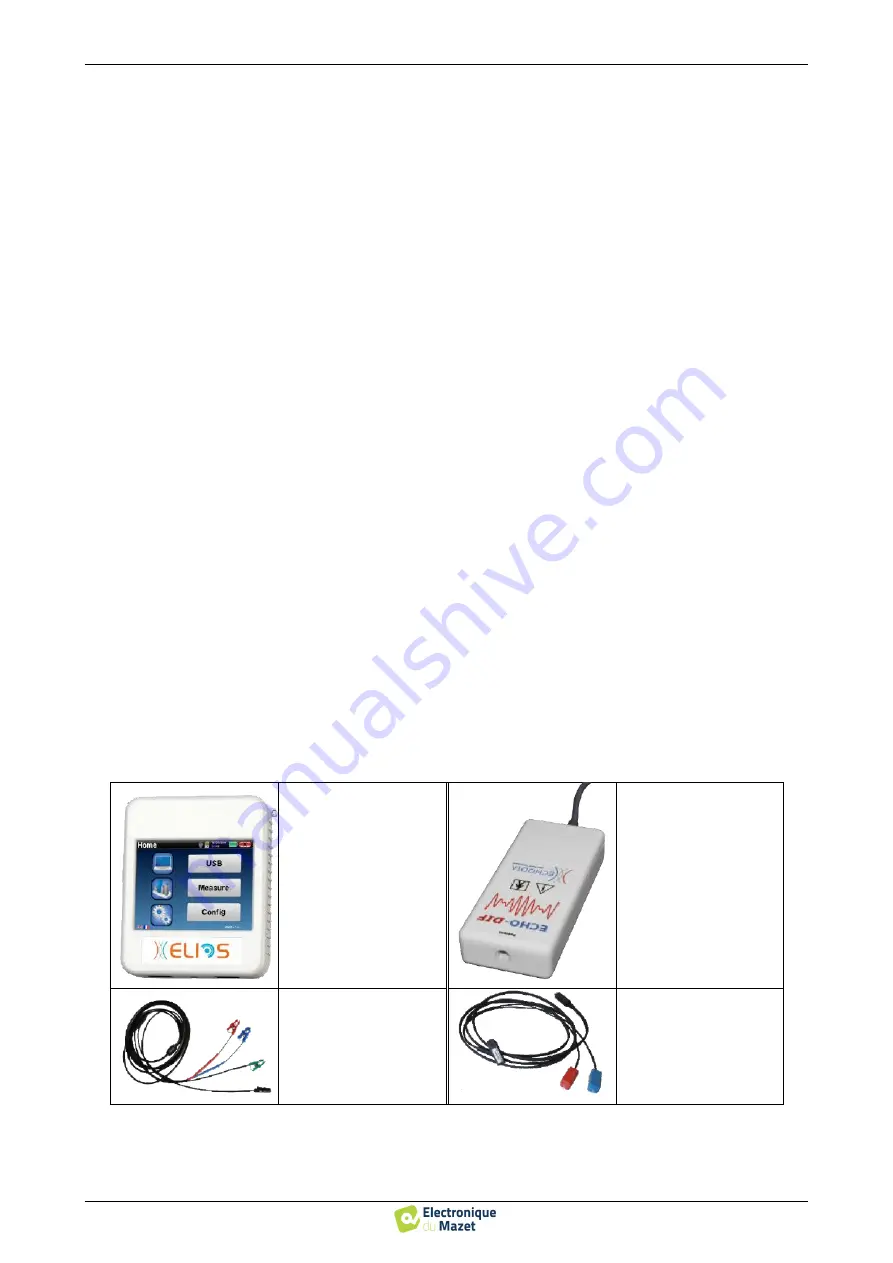
User guide
ELI
O
S
ECH001XN111-A4 – 07/2022
35
Introduction and test setup
3.5 DPMC (Hydrops)
3.5
DPMC (Hydrops)
DPMC:
Cochlear Microphonic Potential Phase Shift
The cochlea, a peripheral hearing organ, contains outer hair cell (OHC) which play a part in the amplification of acoustic
signals because of their contracting property. By applying an acoustic stimulation to the ear, more particularly by a tone burst
at a frequency of 1 kHz, we will stimulate "the" OHC which is sensitive to this frequency.
The OHC stimulated in this way will contract by "resonance", that is with the same frequency as the stimulation frequency
(1kHz). In the same way as for a muscle, the contracting of the OHC will generate a specific electric potential: The Cochlear
Microphone Potential (PMC).
In addition, by contracting, the OHC will put the basilar membrane into movement inducing the movements on the endolym-
phatic liquid, affecting the auditory ossicles then the eardrum. By vibrating, the eardrum emits a specific sound, an Otoacous-
tic emission (OAE). In the case of a bi-tone acoustic stimulation, the otoacoustic emissions received will result from two
stimulations, a distortions product of otoacoustic emissions (DPOAE).
The repetition of an identical acoustic stimulation is followed by identical responses by the outer hair cell. However, any
environmental change in the OHC, and more particularly any change in the intra-cochlear pressure will constrain them and
slow down their responses. The frequency and amplitude characteristics of the OHC are more or less identical when the intra-
cochlear pressure is increased. However, the pressure stress will slow down the emission of the PMC or DPOAE by inducing
a measurable delay, a phase shift.
Thanks to its knowledge and cooperation with the sensory biophysics laboratory of Clermont-Ferrand, E
CHODIA
has found a
way of defining a new method for the physiological measurements of the inner ear: Cochlear Microphonic Potential Phase
Shift (DPMC). This world-unique measurement, the property of ECODIA, records an electrical response (from the outer hair
cell) of the cochlea following a known acoustic stimulation of "tone burst" type. "Monitored" over a given time, the cochlear
physiological parameter allows real-time monitoring of the intra-cochlear pressure change.
In a healthy subject like a subject affected by endolymphatic hydrops, a postural test (changing from the standing positions
to laying down) increases the intra-cochlear pressure (exacerbated as part of Ménière's disease). Indeed, during the postural
test, there was a change in the distribution of the cerebrospinal fluid (CSF) which propagates as far as the cochlea via the
cochlear aqueduct.
3.5.1
Equipment
To make
DPMC
measurement you will need the following equipment:
ELI
O
S
unit
E
CHO
-
DIF
unit
Electrophysiology
cable with accessories
Insert earphone













































